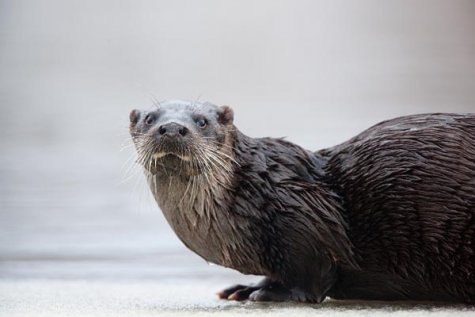Otter business
Photo: Arne Ader
Translation: Liis
Otter
Otter; European otter Harilik saarmas
The sluices of heaven can't keep the rain up there, the water level in rivers is much higher than in an ordinary autumn. In the dens of otters - whom we meet rather rarely in nature - the entrances are below the water surface but the builders have calculated it so – more sheltered and safer and the water lock keeps winter cold out.
The otter is an attractive weasel family animal, or mustelid, with a solitary lifestyle, the largest semi-aquatic predator in our waters. The body length of adults is just under a metre; adult males are up to one-third larger and heavier than the females and of course juveniles. It has a dense, beautiful, waterproof and extremely durable brown fur coat. One square centimetre of the otter’s skin has up to fifty thousand hairs. Small air bubbles remain between the short hairs of the base coat, and so only the topcoat gets wet.
It becomes active mainly at dusk, in water as well as on land. How and by what means do otters orientate in muddy water and darkness – their eyesight is quite good under water, but the sensitive long moustaches contribute significantly in hunting as transmitters of information. On diving the nostrils and ears close; the otter stays under water for barely half a minute.
What does it feed on in autumn-winter? On the feeding grounds mostly remains of fish are found, the otter’s main food. Of course it also hunts frogs, molluscs and crayfish that have crawled into the bottom mud for winter if they are present in the waters. Something is always left lying around in the feeding ground – the head and other better parts are eaten and the tail end left. The remains are not there for long – observant eyes are everywhere and food is not for wasting. When rivers freeze they move upstream to ice-free areas with more rapid flow, sometimes into smaller creeks or even ditches. The daily food ration comes to one up to one and a half kilos and finding this in severe winters in order to keep alive is quite problematic. Until spring up to a third of the body weight may be gone.
Otters mark their territory with excrement piles on stones, tree stumps, banks. It is a greyish heap, where fish scales as well as bones can be seen and it smells of train oil.
When there is snow on the ground we will look at the tracks of the otter’s winter doings.









